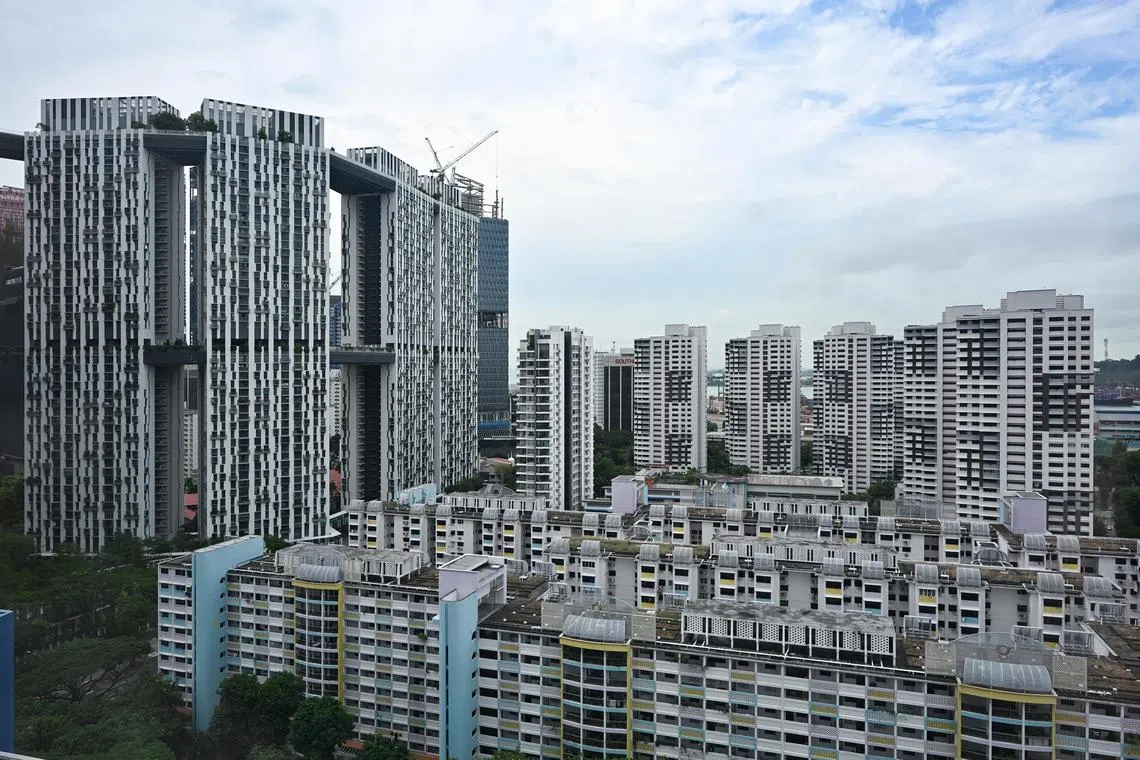HDB and condo rents soften in May as leasing volumes dip
Sign up now: Get ST's newsletters delivered to your inbox

Market watchers attributed the fall in rents to a decrease in demand in both markets, mainly due to a weaker job market.
ST PHOTO: LIM YAOHUI
Hykel Quek
Follow topic:
SINGAPORE - Rents for Housing Board flats have fallen for the first time since January, as renters look towards the condo market, where rents continue to soften.
Flash estimates released by property portals SRX and 99.co on June 21 showed that HDB rents retreated 0.3 per cent month on month in May, but were still 6.2 per cent higher year on year.
Market watchers attributed the fall in rents to a decrease in demand in both markets, mainly due to a weaker job market.
“The weaker job market has also encouraged some young Singaporeans to either delay their plans to move out of their parents’ home to rent their own place, or give up their rental accommodation and move back to live with their parents,” said Mr Nicholas Mak, chief research officer of property portal Mogul.sg.
Mr Mark Yip, chief executive of real estate firm Huttons Asia, noted that the employment market continued to be soft for industries such as information technology, which has affected the number of employment pass holders and the demand for condos.
“The continued tightening of criteria for the S Pass is leading to fewer S Pass holders. At the same time, there were fewer condo tenants looking for an HDB flat to rent,” Mr Yip added, explaining the downward pressure on HDB rents.
Mr Eugene Lim, key executive officer of property firm ERA, said a downward trend for rentals, however, could benefit firms looking to expand their workforce as accommodation costs for expatriates become more affordable.
Rents in the condominium market continued to decline for the second straight month, easing 0.5 per cent on the month from April.
Compared with the same period the year before, condo rents were down 4.5 per cent.
The drop in rents for both markets came as leasing volumes for both markets declined.
HDB rental volumes fell 13.2 per cent to 2,558 units in May, from 2,946 units in April. Year on year, volumes were down 12.3 per cent, and 8 per cent lower than the five-year average volume for May.
Four-room flats accounted for 38.1 per cent of HDB rental volumes in May, followed by 35.4 per cent for three-room flats, 22 per cent for five-room flats, and 4.5 per cent for executive flats.
Rents for five-room flats were up 0.8 per cent in May from the month before. The rents for other flat types fell.
Three-room flat rents recorded the steepest month-on-month decline of 0.7 per cent. This was followed by four-room flat rents (down 0.5 per cent) and executive flat rents (down 0.4 per cent).
Mature-estate rents dipped 0.8 per cent from April,
Ms Christine Sun, chief researcher and strategist at property firm OrangeTee Group, noted that the weaker demand in the HDB rental market could also be seasonal as landlords and tenants travelled abroad in the lead-up to the June holidays, which resulted in less rental activity.
She noted that rental activity could recover after the holiday period ends.
In the condo market, rental volumes fell 12.2 per cent on the month to 5,155 units rented in May, from 5,874 units in April. Year on year, rental volumes were 0.4 per cent lower, and 5.7 per cent lower than the five-year average volume for May.
Leasing volume in the outside central region (OCR) or the suburbs slightly outpaced the other regions, accounting for 35.5 per cent of total transactions in May. This was followed by the rest of central region (RCR) or city fringe, which contributed 33.5 per cent, while the core central region (CCR) or prime areas accounted for 30.9 per cent.
All three regions posted a month-on-month decline in rents, with the RCR posting the largest fall, at 1.1 per cent. Rents in the CCR fell 0.2 per cent, and those in the OCR dropped 0.7 per cent.
CCR rents recorded a year-on-year fall of 3.7 per cent, while RCR and OCR rents each fell by 4.9 per cent. THE BUSINESS TIMES

